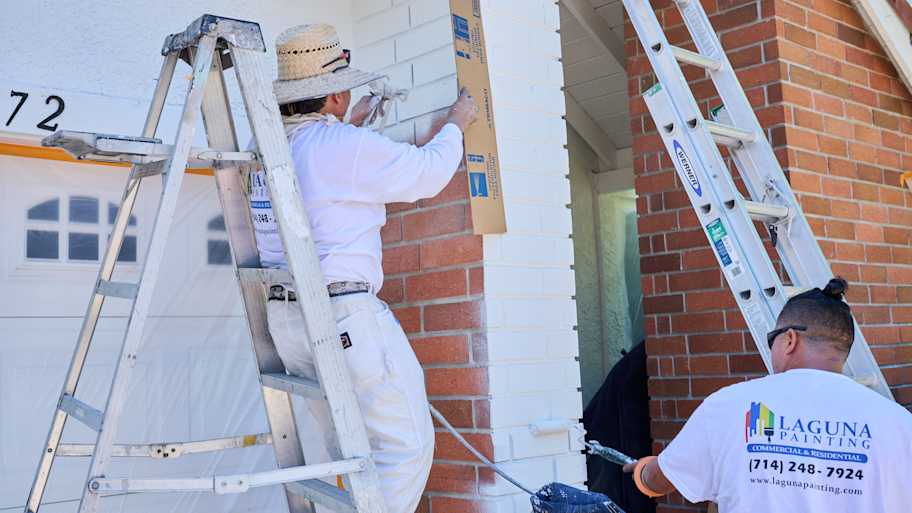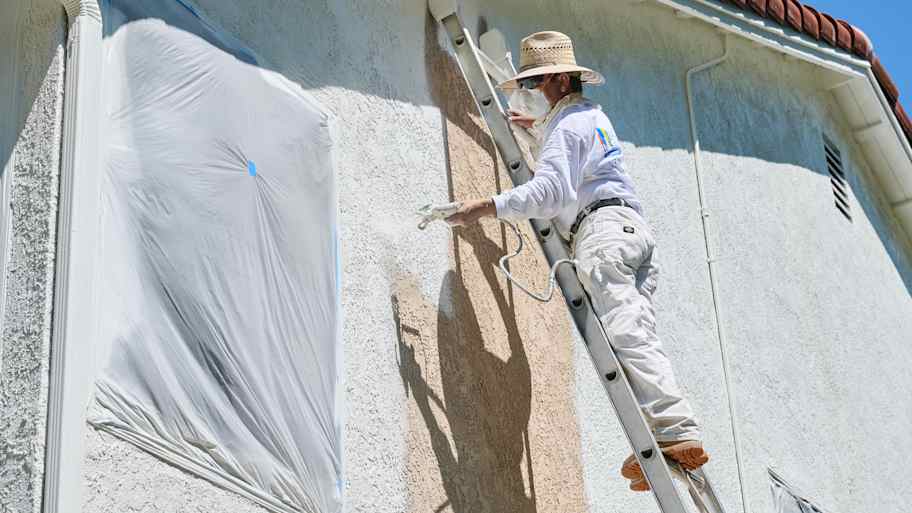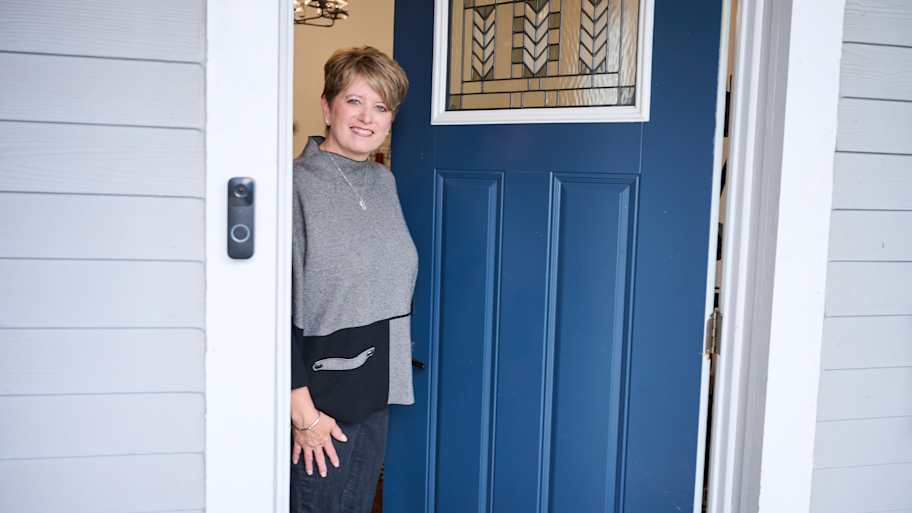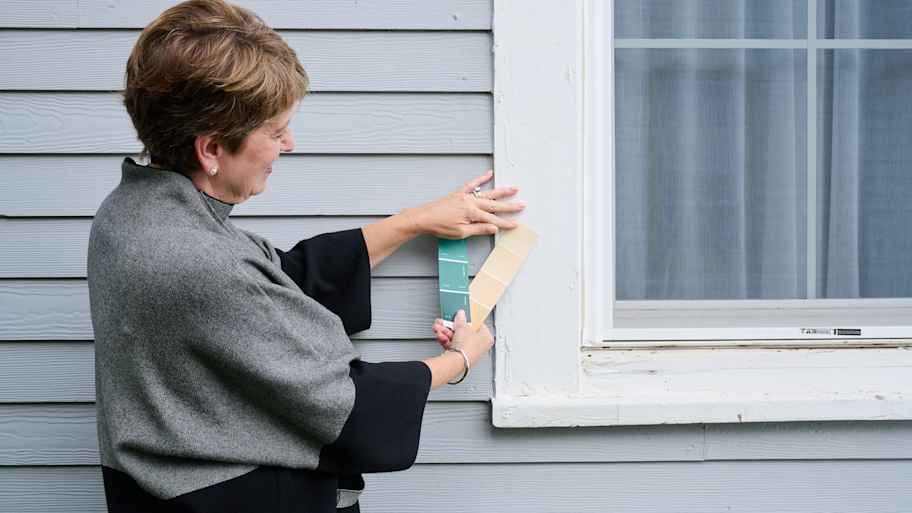Can You Paint in the Rain?
Painting in the rain? Let the stormy clouds chase you back inside.


Paint doesn’t stick well to wet surfaces and rain may wash away your hard work before it can dry.
Humidity increases the time paint takes to dry between coats.
Wait at least four hours after a rainstorm to start painting.
If the area is covered and protected from wind and rain, it’s fine to paint.
You can paint interiors when it’s raining, but you should shut windows that are very close to the painting project.
If you want to make the skies open up with a downpour, set a firm timetable for your painting project. That string of sunny days you planned for will leave you high and, well, not dry, sticking you with less-than-perfect weather to get the job done.
Wet paint and heavy rain don’t exactly mix, so what can you do if rainy days interrupt your project? Can you paint in the rain or should you wait for the weather to clear? While it’s not ideal to power through, the answer is not a simple yes or no, so keep reading to learn the basics of when you can paint in the rain and when you should pack up and head inside.
Should You Paint in the Rain?
In most cases, painting in the rain is not advisable, as a heavy downpour will ruin your paint job, setting back your timeline and wasting your materials. There is a reason, after all, why most local exterior painters take the day off during torrential rainstorms.
Wet conditions also pose a safety risk, making it easy to slip—especially dangerous if you’re using a ladder for hard-to-reach spots.
However, halting your paint schedule for the rain is not a hard and fast rule. It all depends on the specific weather conditions, how protected your project is from the elements, the type of paint you choose, and other factors. Look at the forecast and weather maps to see how much rain you can expect and for how long. If it’s just a sprinkle over an hour or two, you may be fine to continue. But persistent or heavy rain will definitely throw a wrench in your painting plans, especially if there is a lot of wind blowing that moisture around.
Absolutely pause your project if a thunderstorm or other major weather event is rolling in. It’s not worth your safety to attempt to get the job done under dangerous conditions.
When Is It Fine to Paint in the Rain?

There are some instances when painting in the rain doesn’t pose a problem. The location of your project and the severity of the downpour will determine whether or not you can paint. Here are a few examples.
Covered areas: If you’re working outside and the exterior location is completely protected from the rain, go ahead and paint. Porches and decks with ample roof coverage may be safe enough to paint when the rain is light and the wind isn’t blowing it your way.
Interior surfaces: Interior walls and other indoor projects are fine to paint during even the most torrential rainstorms. Just be mindful of ventilation if you need to close nearby windows to stop water from getting in.
Light rain: In some cases, you can lay down a coat of paint during a period of light rain, but be aware that you may have some bare patches when all is said and done, necessitating another coat. Rain washes away fresh paint, but it really depends on the severity of the storm and the direction it’s blowing.
How Soon Can You Paint After It Rains?
Painting while it’s raining is a risky proposition, but what about when it stops? You’ll want to wait at least four hours to ensure the surface has dried properly. Give it a touch test: If the surface feels dry, it’s fine to lay down some paint, but drying times vary according to the area and conditions. For example, trim, molding, and nail holes take longer to dry than a wall completely exposed to the sun.
If you’re extra cautious, wait for a number of sunny days in a row to ensure your surface has completely dried.
Tips for Painting in Rainy Weather
Ideally, you can avoid the rain altogether, but sometimes a little moisture can’t be avoided. Here are some tips to consider when planning your painting schedule around bad weather.
Aim for the best conditions: Before you pick up a brush, look ahead at the weather you can expect. Several sunny days in a row ensure proper conditions and even drying, which speeds up the entire painting process. If there’s no sun to be had, know that temperature and humidity matter too—conditions at or above 72 degrees Fahrenheit with humidity under 70 percent will yield the best results for drying time.
Take it slow: No timeline is worth risking your safety. Go slow, exercise caution, and take a break if the rain gets heavier than a drizzle.
Try a plastic enclosure: If your roof overhang doesn’t offer adequate protection from the elements, try covering the area with plastic sheeting to create makeshift walls.
Use acrylic paint: Acrylic does better with moisture than other formulations because it doesn’t bubble or trap water and it’s mildew resistant. It also dries faster than oil-based paint.
Be wary of dark colors: When it comes to paint, dark colors take longer to dry than lighter colors. Keep that in mind when planning how long it’ll take to dry between coats, especially if there’s more rain on the horizon.
Painting Indoors When It’s Raining
When rain clouds start swirling above, you know there will be issues with an outdoor painting project. But what about an indoor one? Well, good news. Rain shouldn’t prevent you from painting inside. Your project can continue as planned, unaffected by any storms outside. You may have to leave the windows closed or only open them halfway, and the paint may dry slower from the humidity. Other than that, you’re good to go, rain or shine.
Lawrence Bonk contributed to this article.
Frequently Asked Questions
The best month to paint outside depends on the climate where you live. Temperate and dry conditions are ideal, but that can mean a different time of year for a homeowner in Florida compared to one in Washington. Late spring, early summer, and early fall offer the best weather for painting. If you live in a cool area, you might look to paint in June, while those in hotter places might find better results in September after the heat breaks.
While the answer varies based on weather, 10 a.m. is a good time to start painting. The dew will have dried, meaning there’s no moisture on the house, and the temperature will likely be moderate and the sunlight less direct. Starting mid-morning should also give you enough daylight and pleasant weather to work on the job for several hours.
It’s necessary for paint to completely dry before exposure to rain, and that drying time varies by the type of paint used. Oil-based paint takes 6 to 8 hours to dry on average, meaning that’s the minimum time needed between the last brush stroke and the first raindrop. Latex paint dries faster at around 1 hour, and acrylic paint is even quicker, usually drying in about 30 minutes. If rain is in the forecast, check the paint manufacturer's details before laying on a new coat.





- When Is the Best Time to Paint Indoors? A Helpful Guide
- When Is the Best Time to Paint Your House Exterior?
- 10 Common Painting Mistakes Homeowners Should Avoid
- 11 Painting Tips and Techniques for Your Home Painting Project
- When Is the Best Time to Paint Your Garage Floor?
- How to Paint Hardwood Floors for the Best Results
- 8 Exterior House Painting Tips You Should Know
- Do You Paint Trim or Walls First in Your Room? How to Decide
- Essential Supplies to Paint a Room: What You Really Need
- Can Roofers Work in the Rain?

 - Derek Rose.png?impolicy=thumbnail)








